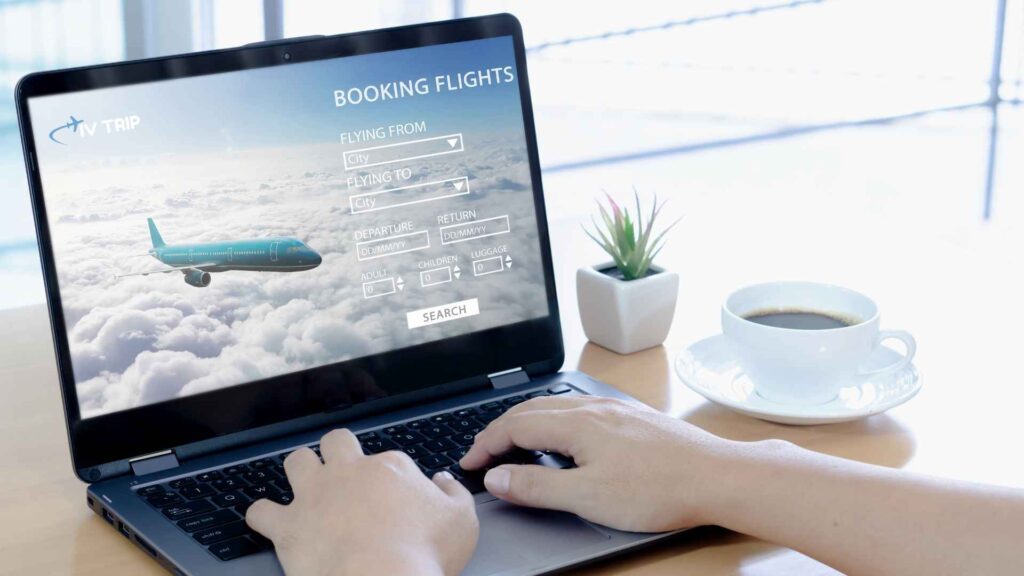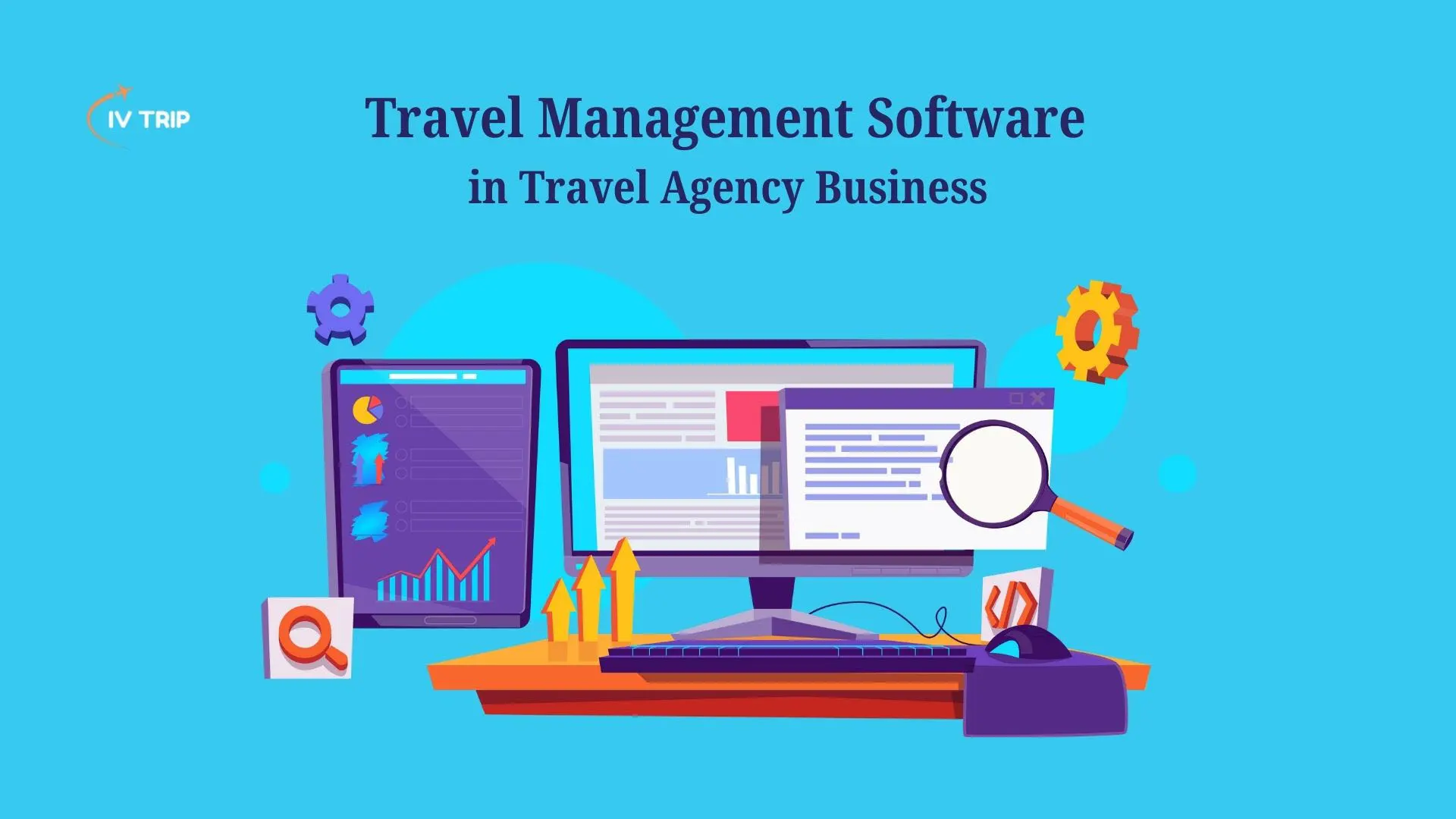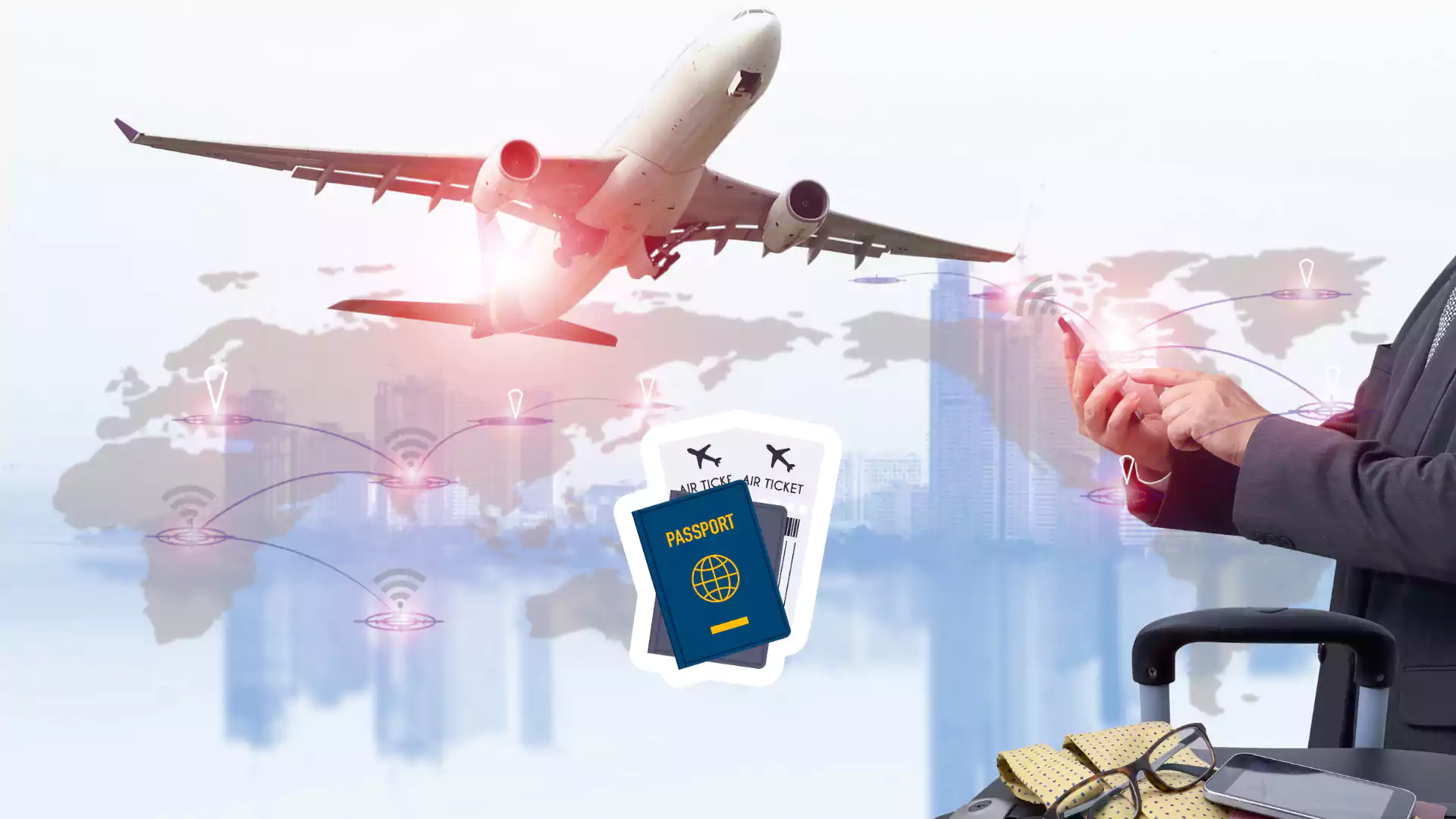Top Corporate Travel Software for Streamlined Expense Management

Managing corporate travel expenses can be complex and time-consuming. Companies often juggle receipts, policy rules, and manual reporting, which leads to delays and errors. Modern corporate travel software solves these problems by automating financial tasks and centralizing travel data.
This article explores how travel software streamlines finances, covers key features of Travel Expense Management Software, and shows how businesses can budget travel effectively. We’ll link to relevant IvTrip/Implevista resources and cite industry experts and studies to support best practices.
Corporate travel platforms unite booking and expense management. For example, Implevista’s IV Trip offers a unified travel agency solution with modules for real-time flight/hotel bookings and Travel Agency Accounting. This tight integration means agencies track invoices and receipts in the same system they use to book travel, reducing manual reconciliation.
By integrating trip planning and financial tools, travel software lets businesses see all travel spend in one place. As Investopedia notes, corporate travel management (CTM) involves “controlling travel expenses” through approval processes, itineraries, and expense audits. In practice, a robust CTM system enforces spending policies and streamlines reimbursements, keeping company travel costs under control.

Understanding Corporate Travel Management (CTM)
Corporate Travel Management (CTM) is the business process for planning, booking, and approving employee travel and related costs. A CTM program sets policies (approved suppliers, expense limits, etc.) and oversees all travel spend. “Keeping costs under control is a primary reason for implementing a corporate travel management program,” explains Investopedia. In practice, corporate travel managers review expense reports and enforce policies.
For example, companies often issue corporate credit cards to simplify tracking. CTM systems (software platforms) extend this by automating approvals: modern travel management tools can flag or even reject expenses that violate company rules. This automated oversight ensures employees comply with budget limits and travel policies without manual checking.
According to Deloitte, corporate travel spending is rebounding strongly, with U.S. companies expecting 8–12% growth in 2024 travel budgets. This makes CTM software critical. By centralizing bookings and reports, travel systems give finance teams real-time visibility into spending. For instance, when travel, expense, and corporate card data all flow into one platform (especially if it syncs with accounting software), CFOs can generate consolidated reports easily and make informed budgeting decisions.
Challenges in Travel Expense Management
Traditional travel expense handling is error-prone. Manual processes (paper receipts, spreadsheets) create bottlenecks. Surveys show that 61% of finance executives report frequent policy violations, and 73% expect the problem to worsen as their companies grow. Without an automated system, tracking every out-of-policy spend is nearly impossible. As one CFO Dive article notes, legacy T&E management “absorbs too much of [the finance team’s] time”. Common pain points include lost receipts, slow reimbursements, and inaccurate forecasting.
Modern travel software addresses these challenges by providing expense management software features. Key improvements include:
- Receipt Capture & OCR: Employees photograph receipts or forward invoices to the system. AI-driven software then automatically extracts data (date, amount, merchant). This eliminates manual data entry, reducing errors and speeding up expense reporting.
- Policy Enforcement: Built-in rules check expenses in real time. For example, the software can instantly flag duplicate or out-of-policy charges on a mobile app. This prevents many policy violations upfront.
- Integration with Cards & ERP: Many systems sync with corporate credit cards and accounting (ERP) platforms. When all spend data flows to one dashboard, finance teams gain complete visibility of expenditures.
- Real-Time Approvals: Managers can approve or reject expenses via mobile apps, reducing the “trip-request bottleneck”. Employees no longer wait weeks for reimbursements.
- Reporting & Analytics: Automated dashboards categorize travel spend by trip, department, or vendor. Leaders can spot trends and cost overruns early on, rather than reacting at month-end.
Putting it simply, these features help companies stop budget leaks. As one study found, businesses that improved T&E compliance from 40% to 91% saved an average of $321,000 over three years. Standardizing travel bookings and expense policies also enabled one firm to net ~$482,000 in 3-year savings. In short, automated Travel Expense Management pays for itself by cutting waste.
Key Features of Travel Expense Management Software
The best travel and expense solutions combine multiple capabilities to streamline finances. Here are some essential features:
- Automated Expense Submission: Employees can submit expenses on the go. A photo of a hotel bill or flight receipt instantly populates the expense report. This is described as “AI’s ability to process and review receipts automatically”, which eliminates human error and speeds submissions.
- Policy Alerts in Booking: Advanced travel platforms embed corporate policies into booking tools. When employees search for travel, the system highlights options outside policy or suggests cost-saving alternatives. This guides travelers to compliant choices and deters unauthorized bookings.
- Data Centralization: All travel bookings, receipts, and card charges are aggregated in one system. CFO Dive notes that a unified platform lets teams “access and report on all of their data on travel, expenses and commercial cards through a single solution”. This holistic view makes reconciliation and auditing trivial.
- Expense Auto-Coding: Some systems automatically allocate expenses to correct GL codes based on patterns or past behavior. This “Automated Data Extraction” relieves finance staff from routine bookkeeping tasks.
- Mobile Accessibility: Travel software is cloud-based, so employees can book trips and log expenses from any device. This immediacy ensures up-to-date records and faster reimbursements.
- Customized Workflows: Businesses can tailor approval workflows (e.g. multi-level sign-offs or expense thresholds). Enforcing travel and expense policies through the software reduces the surprise of denied claims.
- Analytics & Alerts: Built-in analytics highlight spending patterns. For example, if nightly hotel rates spike during a conference, the system can alert managers to adjust future budgets. Real-time dashboards empower proactive budgeting.
In practice, Corporate Travel Software often includes these expense modules alongside booking features. For instance, IV Trip’s Accounting Management dashboard tracks money in/out with invoicing, expense tracking, and commission reportsivtrip.implevista.com. When travel services and financial tools live together, companies avoid data silos and manual reconciliations.

Business Travel Budgeting with CTM
Creating a robust travel budget starts with clear categories and real-time oversight. Typical corporate travel budgets include accommodation, airfare, meals, and ground transport. (For instance, a 2024 report noted average US business trips cost ~$1,800, encompassing these categories.) Modern CTM software can enforce spending limits per category automatically. For example, it might restrict meal expenses to company rates or flag hotels above the nightly cap.
Real-time tracking is key. “Real-time tracking provides visibility into travel costs as they happen,” explains Brex, which means managers can check actual spend versus budget instantly. If one department starts booking too-expensive hotels repeatedly, the dashboard highlights the trend immediately.
This visibility transforms budgeting from a rear-view analysis into dynamic planning. Managers can negotiate better vendor rates or adjust budgets before overruns occur. In one scenario, spotting inflated hotel choices mid-conference might prompt a switch to a cheaper rate rather than waiting until month-end to discover the issue.
Integrated Expense Management Software also improves forecasting. By analyzing past travel spending data, companies gain insights into seasonal patterns (e.g. higher airfare during holidays) and can model future cash flow. Automated reports allow finance teams to answer questions like “Are we on track with our Q3 travel budget?” in real time, rather than waiting for late expense reports.
In sum, travel software helps enforce Business Travel Budgeting best practices: setting clear per-diem limits, monitoring spend continuously, and using historical data to inform future plans. This disciplined approach prevents unpleasant budget overruns and aligns spending with corporate goals.
Travel Expense Automation and AI
Emerging technologies are turbocharging travel finance workflows. Artificial Intelligence and automation can eliminate mundane tasks in expense reporting. For example, AI-powered receipt scanning tools (like DATABASICS’s DBee) allow employees to submit expenses via chat or email. The system instantly categorizes the expense and checks it against policy. This real-time compliance ensures most mistakes are caught before reimbursement.
AI also enhances financial accuracy. Chatbots and virtual assistants can now suggest travel alternatives or notify planners of currency fluctuations, helping keep budgets accurate. Deloitte reports that some booking tools will integrate sustainability and currency data to inform booking choices. In the future, many travel management systems will leverage AI for everything from predicting expense trends to optimizing per-diem calculations.
Beyond AI, automation of approval flows means faster reimbursements. Automated notifications can expedite manager sign-offs, and e-payments can be triggered directly from the system. Travel software with expense automation ensures that finance teams spend less time on processing and more on analysis. As one expert notes, digital T&E solutions give employees “real-time visibility into spending, and greater control in the form of built-in policies,” dramatically reducing policy violations.

Choosing the Right Travel Management Software
With many T&E platforms on the market, businesses should look for solutions that fit their size and needs. Key factors include:
- Integration Capabilities: The system should connect to existing ERP or accounting software. When travel bookings automatically sync with finance systems, reporting is seamless.
- User Experience: A user-friendly mobile app encourages employee adoption. Modern platforms aim for “no training needed” ease, lowering the change-management load.
- Scalability: As travel volume grows, the software must handle more users without extra IT support. Cloud-based SaaS models (like IV Trip) allow businesses to scale up or down easily.
- Policy Configuration: Good platforms let you encode your travel rules. Built-in policy engines can detour employees from off-policy options, as one expert puts it: “Having clarity about what they are allowed to book will encourage most employees to stay within policy.”.
- Value: Consider total cost of ownership. Some providers charge no hidden fees for cards or reporting, which is crucial for mid-market firms on tight budgets.
For travel agencies specifically, IV Trip exemplifies these qualities. IV Trip integrates real-time flight/hotel GDS with an accounting module, so agencies can manage quotes, invoices, and expenses in one dashboardivtrip.implevista.com. As described in Implevista’s materials, IV Trip “centralizes booking management automates processes, enhances operational efficiency, and helps agencies deliver top-notch customer experiences.”. Agents benefit from features like automated commission tracking and instant invoice generation. In short, IV Trip is a CTM solution tailored to simplify agency finances.
When evaluating vendors, also review internal Implevista resources. For example, Implevista offers [Cloud Engineering services] for system integration and [Digital Marketing expertise] for outreach. Their blog covers SaaS strategies that can complement your travel platform.
Integrating Travel Software with Financial Systems
To fully streamline finances, travel management software should not live in isolation. Integrating it with accounting and payment systems unlocks further efficiency. For instance, coupling travel bookings with a corporate credit card system means all charges flow automatically into expense reports.
One article notes that modern platforms let you “streamline reporting and have total visibility of all spend within a month, quarter or year”. When travel data feeds directly into your general ledger, month-end closes faster and reconciliation headaches disappear.
Implevista’s product suite illustrates this synergy: besides IV Trip for travel, they offer iQuidi for financial management. iQuidi automates invoicing, bill tracking, and cash flow reporting. A travel agency could, for example, use IV Trip for bookings and pass revenue data to iQuidi for accounting. This end-to-end workflow—bookings to billing to analysis—ensures travel expenses are tracked as rigorously as any other business cost. The combined system provides “detailed financial insights through customizable reports and dashboards,” enabling data-driven budgeting.
Moreover, cloud-based travel software often comes with built-in analytics that link directly to financial dashboards. This means you can generate custom travel expense reports (by project, department, or traveler) with a click. Advanced teams even use business intelligence tools on top of travel data to forecast budgets, plan for high-season expenses, and evaluate ROI of travel spend. Ultimately, the goal is that every travel dollar is accounted for in one platform, avoiding leaks and empowering smarter decisions.
Streamlining finances with travel software is no longer optional in today’s corporate world. By replacing manual expense processing with integrated corporate travel software, businesses gain control over budgets and save significant time. Companies that invest in modern travel and expense automation report huge gains – from faster reimbursements to hundreds of thousands of dollars in policy-driven savings.
To summarize: good travel management software enforces policy, automates receipts, and delivers real-time spend visibility. It helps finance teams focus on strategy rather than paperwork. As CFO Dive advises, “CFOs and their teams can access and report on all of their data on travel, expenses and commercial cards through a single solution,” maximizing efficiency.
Ready to automate your travel finances? Explore IvTrip’s Corporate Travel Software and see how our Travel Agency Accounting module can handle invoicing, commissions, and expenses seamlessly. Contact IvTrip today for a demo (or visit our [contact page] for more info). To keep learning, subscribe to the Implevista Blog for tips on travel software and financial automation. You can also read our related posts on digital travel solutions and cloud finance tools to get ahead of the curve.

FAQ
What is travel expense management software?
Travel expense management software is a tool that automates corporate travel spending and reporting. Employees submit costs (often via mobile apps or scanned receipts) and the software extracts the data, applies company policies, and processes reimbursements. It replaces paper forms with a streamlined digital workflow, speeding approvals and improving accuracy.
How does corporate travel software help finance teams?
Corporate travel software unifies booking and expense processes. It automatically captures costs, enforces budget rules, and integrates with accounting systems. As a result, finance teams gain real-time visibility into travel spend and reduce manual work. One analyst notes that a single platform can let CFOs “streamline reporting and have total visibility of all spend”, meaning finance no longer juggles multiple spreadsheets.
What features should I look for in travel management software?
Key features include automated receipt capture (OCR), policy compliance checks, mobile access, reporting dashboards, and integration with credit cards/accounting systems. For example, AI-driven receipt scanning extracts expense details with high accuracy, while built-in rules flag unauthorized expenses in real time. Good platforms also allow custom approval workflows and provide travel-booking tools that respect company budgets.
How does travel expense automation work?
Employees submit receipts (photos, emails, or app snapshots). The system uses OCR/AI to extract information (amount, date, vendor). It then matches the expense to corporate credit card charges or budgets. If an expense is out-of-policy or duplicate, the software flags it immediately. This automation cuts out manual data entry and speeds up the entire reimbursement process to minutes rather than days.
What is Corporate Travel Management (CTM)?
CTM refers to the organizational process of handling employee travel and related expenses. It includes setting travel policies, approving itineraries, booking logistics, and auditing expense reports. CTM programs aim to contain costs; for example, finance leaders often implement travel policies to keep budgets in check. Specialized CTM software helps automate these tasks and track spending against budget.
How can travel software help with budgeting?
Travel software provides data-driven budgeting by tracking actual spend in real time. Managers can define budgets by category (hotels, meals, airfare) and get immediate reports on usage. This visibility lets leaders adjust limits, negotiate vendor rates, or reallocate funds quickly. For instance, by spotting unusually high hotel costs during a trip, a team can shift bookings to cheaper rates before overspending.
What are the benefits of integrating travel and expense systems?
Integration ensures that every booking and expense flows into a single financial system. This eliminates duplicate data entry and reduces errors. Finance teams can automatically reconcile travel costs with ledger accounts. As CFO Dive highlights, managing travel, expenses, and card spending “through one single solution” greatly reduces policy violations and speeds up reporting.
Can AI improve travel expense management?
Yes. AI automates many manual tasks: it reads receipts, applies expense categories, and even suggests cost-saving options. For example, AI chatbots can help employees submit expenses via text and ensure policies are followed automatically. In the future, AI will also recommend the best travel deals and forecast currency impacts, helping companies optimize every travel dollar.
How does IV Trip streamline travel finances?
IV Trip combines travel booking with accounting tools. Its Accounting Management feature lets agencies invoice clients, track commissions, and log expenses all within the travel software ivtrip. By automating these steps, IV Trip removes paperwork and syncing headaches. Agencies using IV Trip can view bookings and financial reports on one dashboard, simplifying both operations and auditing.
What is Business Travel Budgeting and how do I start?
Business travel budgeting is the practice of planning and controlling travel-related spending. To start, list typical expense categories (flights, hotels, meals, etc.) and set spending limits for each. Travel software helps enforce these limits – for example, by using per-diem rules and automated alerts. With clear policies and real-time tracking, employees know what’s allowable, and managers can anticipate total travel costs. As a Brex guide notes, tracking historical travel data and using per-diem allowances (e.g. GSA rates) are proven strategies. This structured approach helps companies accurately forecast travel budgets and avoid surprises.

